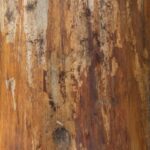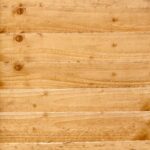Are you wondering how to remove gloss from woodwork to achieve a fresh finish? Woodwork can lose its luster over time due to the accumulation of gloss, making it crucial to remove it before applying a new finish. In this article, we will explore the importance of removing gloss from woodwork and why it is necessary for achieving a revitalized look.
Gloss not only affects the appearance of woodwork but also impacts the adhesion and durability of any new finish applied. Understanding what gloss is and how it affects woodwork is essential for maintaining and restoring its natural beauty. Additionally, knowing the tools and materials needed for the gloss removal process, including sandpaper, paint stripper, and safety equipment, is vital for a successful outcome.
Preparing the woodwork for gloss removal involves steps such as cleaning the surface and protecting surrounding areas. Once properly prepared, there are different methods for removing gloss from woodwork, such as sanding, chemical stripping, and heat stripping. Troubleshooting common issues that may arise during the process is also critical to overcoming any challenges that may occur.
Lastly, aftercare tips for cleaning and treating the woodwork post-gloss removal will ensure a smooth and even finish. Stay tuned as we delve into each step in detail to guide you through effectively removing gloss from woodwork.
Understanding Gloss
What Is Gloss?
Gloss refers to the level of shine or sheen on a surface, and it can significantly affect the appearance of woodwork. In the context of wood finishing, gloss is commonly associated with varnishes, lacquers, and other protective coatings. These coatings are designed to provide a shiny and smooth finish that enhances the natural beauty of the wood. However, over time, this glossy finish can become dull, worn, or uneven, detracting from the overall appearance of the woodwork.
How Gloss Affects Woodwork
When gloss begins to deteriorate on woodwork, it can create an unsightly and uneven appearance. This may be due to factors such as exposure to sunlight, moisture, or general wear and tear. In some cases, the glossy finish may also develop cracks or bubbles, further compromising the aesthetic appeal of the woodwork. Additionally, an uneven gloss can make it challenging to achieve a satisfactory final finish when refinishing or repainting the woodwork.
Why Gloss Needs to Be Removed
Removing gloss from woodwork is essential for achieving a fresh and uniform finish. Whether you want to refinish the woodwork with a new coat of varnish or paint it with a different color, removing the existing gloss is crucial for ensuring that the new finish adheres properly and looks smooth and even. By eliminating any remnants of old gloss, you can create a clean canvas for applying new coatings effectively.
Moreover, removing gloss allows you to address any underlying damage or imperfections in the wood before proceeding with refinishing or repainting. This results in a more professional-looking outcome and prolongs the longevity of your woodwork maintenance efforts.
By understanding what gloss is and how it affects woodwork, homeowners can better appreciate why it is necessary to remove gloss before refinishing or repainting their cherished furniture pieces or interior fixtures.Keyword: how to remove gloss from woodwork.
Tools and Materials
When it comes to removing gloss from woodwork, having the right tools and materials is crucial for a successful outcome. Here is a list of all the necessary items needed for the gloss removal process:
- Sandpaper: Different grits of sandpaper will be required for the varying stages of removing gloss from woodwork. Coarse-grit sandpaper is helpful for initial stripping, while finer grits are used for smoothening the surface.
- Paint Stripper: A good quality paint stripper is essential for effectively breaking down and removing the glossy finish from woodwork. Choose a paint stripper that is suitable for the type of gloss you are trying to remove.
- Safety Equipment: Safety should always be a priority when working on any DIY project, including gloss removal from woodwork. Essential safety equipment includes gloves, goggles, and a face mask to protect yourself from harmful fumes and chemicals.
- Putty Knife or Scraper: These tools will come in handy for scraping off any remaining gloss or residue after using the paint stripper.
- Clean Cloths and Cleaning Solution: Before applying any chemicals or sanding, it’s important to thoroughly clean the woodwork with a suitable cleaning solution and lint-free cloths to ensure that all dirt and debris are removed.
It’s important to ensure that all necessary tools and materials are gathered before starting the gloss removal process in order to work efficiently and get optimal results while also prioritizing safety. Follow proper guidelines when using chemicals such as paint strippers and make sure to work in a well-ventilated area.
Preparation
- Clean the Surface: Start by thoroughly cleaning the woodwork using a mild detergent and water. Remove any dust, dirt, or grime that may have accumulated on the surface. This will ensure that the gloss removal process is more effective and will result in a smoother finish.
- Protect Surrounding Areas: Before applying any paint stripper or sanding the woodwork, it’s important to protect surrounding areas from potential damage. Use painter’s tape and plastic sheeting to cover any adjacent surfaces, floors, and furniture to prevent them from being affected by the gloss removal process. Additionally, consider working in a well-ventilated area to minimize exposure to harsh chemicals and fumes.
- Safety Equipment: Prioritize safety by wearing appropriate safety equipment such as gloves, goggles, and a mask when working with paint strippers or sanding materials. This will help protect your skin, eyes, and respiratory system from potential hazards during the gloss removal process.
By following these preparation steps, you can ensure that your woodwork is ready for the gloss removal process while minimizing the risk of damage to surrounding areas and protecting yourself from potential harm.
For more information on how to remove gloss from woodwork safely and effectively, please check out our other articles on woodwork maintenance and restoration techniques.
Removing Gloss
When it comes to renovating woodwork, removing gloss is a crucial step in achieving a fresh and updated finish. Gloss can not only be unsightly, but it also prevents new paint or stain from properly adhering to the surface, leading to an uneven and lackluster result. Fortunately, there are several methods for effectively removing gloss from woodwork, including sanding, chemical stripping, and heat stripping.
Sanding is one of the most common and effective methods for removing gloss from woodwork. By using medium-grit sandpaper or a power sander, you can gently remove the glossy top layer of the wood surface. This method requires some elbow grease and patience but can result in a smooth and clean base for the new finish.
Another option for removing gloss from woodwork is chemical stripping. Paint strippers contain strong chemicals that work by breaking down the glossy finish on the wood, allowing it to be easily scraped away with a putty knife or scraper. It is important to follow safety precautions when using chemical strippers, such as working in a well-ventilated area and wearing protective gear.
Heat stripping is another effective method for removing gloss from woodwork. By using a heat gun or infrared heater, you can soften the glossy surface, making it easier to scrape away with a putty knife or scraper. This method is less messy than chemical stripping but requires caution to avoid scorching the wood surface.
Using any of these methods requires proper preparation of the woodwork and careful attention to detail during the removal process to achieve optimal results. Remember that each method has its own set of pros and cons based on factors such as time constraints, available resources, degree of gloss build-up on your project etc.
| Method | Pros and Cons |
|---|---|
| Sanding | Effective but time-consuming; may require additional refinishing steps |
| Chemical Stripping | Quick results; Strong fumes require careful handling; May damage certain types of wood |
| Heat Stripping | Limited fumes; Risk of scorching wood if not used carefully; Can be more labor-intensive |
Troubleshooting
During the process of removing gloss from woodwork, various issues and challenges may arise that could hinder the overall outcome. One common issue is when the old gloss paint is particularly stubborn and difficult to remove, especially from intricate or detailed areas of the woodwork. In such cases, it’s important to have a systematic approach and use the right tools to effectively strip off the old gloss.
Additionally, encountering uneven patches or spots of remaining gloss after stripping can also be a concern. This can affect the final finish if not properly addressed.
One effective method to address these challenges is using paint stripper for stubborn areas that are hard to reach with sandpaper alone. The chemical components in paint stripper help break down the old gloss paint, making it easier to remove. When dealing with uneven spots of remaining gloss, sanding should be approached carefully and systematically. Starting with a coarser grit sandpaper to smooth out rough areas before moving on to finer grits can help achieve a more even surface.
Another challenge that individuals often face during the gloss removal process is damaging the woodwork itself. This can happen if too much force is applied during sanding or if heat stripping tools are used incorrectly. To prevent this from happening, it’s crucial to use protective equipment such as gloves and safety goggles, as well as taking extra care during each step of the removal process.
| Trouble | Solution |
|---|---|
| Difficult-to-reach areas | Use paint stripper for stubborn areas. |
| Uneven spots of remaining gloss | Sand carefully starting with a coarser grit. |
| Potential damage to woodwork | Use protective equipment and take extra care during each step. |
Aftercare
Cleaning the Surface
After successfully removing the gloss from the woodwork, the next step is to thoroughly clean the surface to ensure that it is free from any remaining residue. Use a mild detergent and water to wash the woodwork, and then rinse it with clean water. Allow the surface to dry completely before moving on to the next step.
Sanding
Once the woodwork is clean and dry, it’s important to sand the surface to prepare it for a fresh finish. Use fine-grit sandpaper to smooth out any imperfections and create a uniform texture on the woodwork. Be sure to sand along the grain of the wood for best results, and take care not to over-sand or damage the surface.
Treating With Wood Conditioner
After sanding, it’s recommended to treat the woodwork with a good quality wood conditioner. This will help to condition and protect the wood, as well as enhance its natural grain and color. Apply the wood conditioner according to the manufacturer’s instructions, using a clean brush or cloth. Allow it to penetrate into the wood for a few minutes, then wipe off any excess conditioner before it dries.
By following these aftercare tips, you can ensure that your woodwork is properly cleaned and treated after removing gloss, resulting in a smooth and even finish that will enhance the beauty of your wooden surfaces for years to come.
Conclusion
In conclusion, it is of utmost importance to remove gloss from woodwork in order to achieve a fresh and professional finish. Understanding what gloss is, how it affects the woodwork, and the necessary tools and materials for gloss removal are crucial steps in the process. By following the proper preparation and removal techniques, such as sanding, chemical stripping, or heat stripping, one can effectively remove the gloss from woodwork and prepare it for a new finish.
It’s important to note that troubleshooting common issues during the gloss removal process can be addressed with the right solutions, ensuring a smooth and successful outcome. Aftercare is also vital to properly clean and treat the woodwork after removing the gloss, ultimately resulting in a smooth and even finish.
For readers interested in learning more about woodwork maintenance and restoration, additional resources such as woodworking forums, DIY tutorials, or professional workshops can provide valuable insight and guidance on how to achieve optimal results when working with woodwork surfaces. These resources can offer further tips, tricks, and best practices for maintaining and restoring woodwork to its former glory. In doing so, readers can take pride in showcasing their beautifully finished woodwork within their homes or spaces.
Frequently Asked Questions
How Do You Remove Gloss Paint From Trim?
Removing gloss paint from trim can be done by first protecting the surrounding area with painter’s tape and drop cloths. Then, use a paint scraper or putty knife to gently scrape away the layers of gloss paint. Once the majority of the paint is removed, sand the area with fine-grit sandpaper to smooth out any remaining residue.
What Is the Best Product to Remove Gloss Paint From Wood?
The best product to remove gloss paint from wood is a chemical paint stripper or remover. Apply the remover according to the manufacturer’s instructions, then use a putty knife or scraper to peel away the softened paint. Afterward, sanding may be necessary to achieve a smooth finish on the wood surface.
How Do You Remove Old Gloss Paint From Door Frames?
Removing old gloss paint from door frames involves similar steps to other surfaces. First, protect surrounding areas and then use a paint scraper to remove as much of the old paint as possible.
Sanding can also help smoothen out any remaining traces of paint. Additionally, using a chemical stripper specifically formulated for door frames can aid in effectively removing old gloss paint from this particular surface.

Hi everyone! I’m a woodworker and blogger, and this is my woodworking blog. In my blog, I share tips and tricks for woodworkers of all skill levels, as well as project ideas that you can try yourself.





